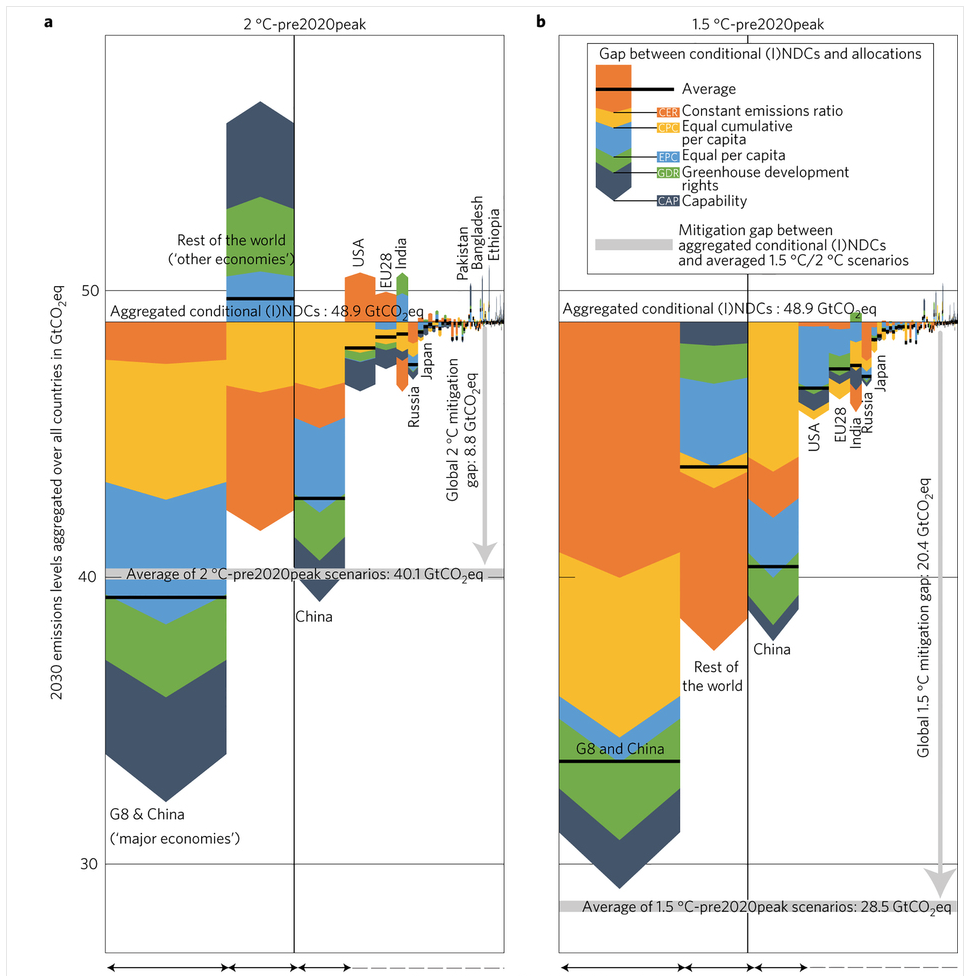Equitable mitigation to achieve the Paris Agreement goals

Authors: Yann Robiou du Pont, M. Louise Jeffery, Johannes Gütschow, Joeri Rogelj, Peter Christoff & Malte Meinshausen
Abstract: Benchmarks to guide countries in ratcheting-up ambition, climate finance, and support in an equitable manner are critical but not yet determined in the context of the Paris Agreement1. We identify global cost-optimal mitigation scenarios consistent with the Paris Agreement goals and allocate their emissions dynamically to countries according to five equity approaches. At the national level, China’s Nationally Determined Contribution (NDC) is weaker than any of the five equity approaches, India’s NDC is aligned with two, and the EU’s and the USA’s with three. Most developing countries’ conditional (Intended) NDCs (INDCs) are more ambitious than the average of the five equity approaches under the 2 °C goal. If the G8 and China adopt the average of the five approaches, the gap between conditional INDCs and 2 °C-consistent pathways could be closed. For an equitable, cost-optimal achievement of the 1.5 °C target, emissions in 2030 are 21% lower (relative to 2010) than for 2 °C for the G8 and China combined, and 39% lower for remaining countries. Equitably limiting warming to 1.5 °C rather than 2 °C requires that individual countries achieve mitigation milestones, such as peaking or reaching net-zero emissions, around a decade earlier.
Citation: Robiou du Pont, Y., Jeffery, M. L., Gütschow, J., Rogelj, J., Christoff, P., & Meinshausen, M. (2016). Equitable mitigation to achieve the Paris Agreement goals. Nat. Clim. Change , advance online publication. doi:10.1038/nclimate3186
The article is available here.
